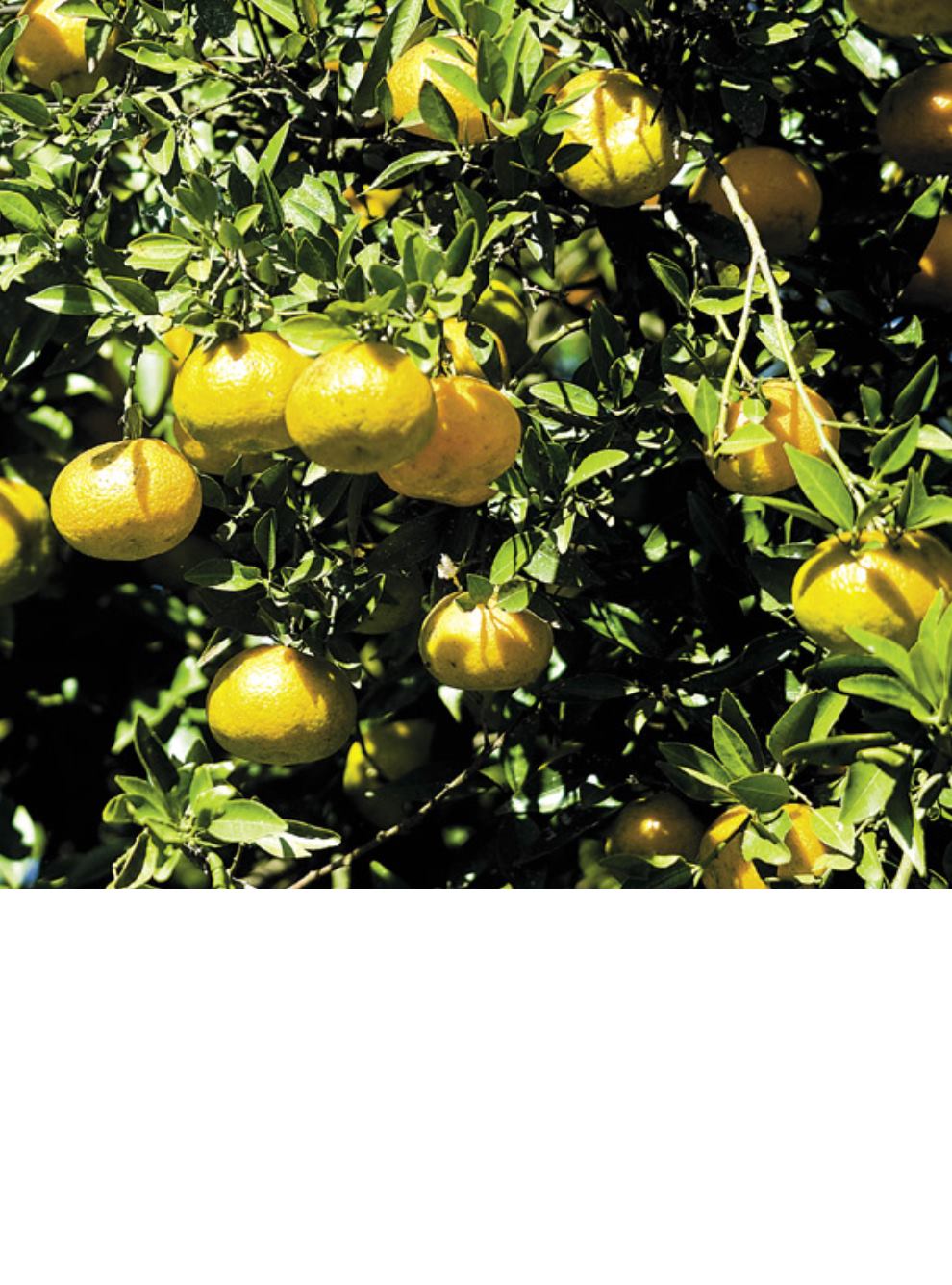
the potential inducers of resistance, an-
tibiotics, thermal treatment and prun-
ing, among others, intended to keep the
longevity and productivity of the infected
plants. “However, the efficiency and du-
rability of these treatments, just like their
economic viability, have not yet been cor-
roborated in several experiments and on-
field trials, in different countries in the
world”, he concedes.
MANAGEMENT
The focus of research
in the short run, especially at Fundecitrus,
has been an improvement to HLB man-
agement practices, based on the elimina-
tion of infected plants and control over the
transmitting insect, with the aim to pre-
vent new infections. “Methods that make
inspection work easier in the orchard in
pursuit of infected plants, and psyllidae
monitoring are now being studied”, cites
researcher Renato Bassanezi. “Moreover,
experiments are going on with contact
pesticides, along with systemic and bio-
logical pesticides, based on the right doses
and ideal application time”.
In order to turn sprayings economically
viable and more sustainable, tests are being
conducted towards reducing and adjusting
the volume of mixture utilized in the tests
for reducing and adjusting the control over
all major diseases and pests that affect the
sector. Furthermore, the planting system is
also undergoing a restructuring process to
delay or prevent the entrance of psyllidae
in the orchard, thus reducing the dissemi-
nation speed of the disease. “At this point,
the bottleneck consists in preventing in-
sects, infected with the bacterium, com-
ing from other orchards or contaminated
plants, from feeding on the healthy plants
and transmitting the bacterium”, he notes.
Inor Ag. Assmann
55


